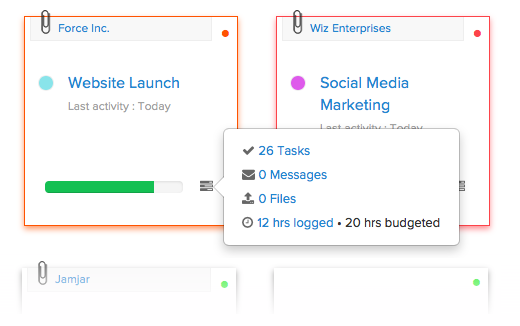Death to Emails: The Trick to Sending Fewer Emails at Work

All you marketers — take a minute and ponder over this following scenario.
Being a marketing organization, it is very likely that you send and receive close to 25 emails every day. And very email requires at the very least 5 minutes of your work time — to read, think or/and draft. That’s 75 minutes or about an hour and 15 minutes spent on entertaining basic transactional pieces of information.
And more often than not an email message hardly ever ends with just a reply from the recipient. A train of emails conventionally follows 1 in every 3 emails sent between two people. And just in case you have bothered to CC an email to 2 more people, well, let us assume the chain will be at least 8–10 emails long. So that’s 8 to 9 emails that require additional 5 minutes of your work time. Let’s log in another 45 minutes for that. Now it all comes to about 120 minutes or two hours devoted just towards addressing and entertaining transactional emails.
Did you ever realize these numbers? I didn’t until I gave this scenario a thought. And I send and receive about 30 emails daily (including trail mails). Now I am left wondering how the heck I ever managed to get anything done. Out of my 8 hours of productivity, 25% of my time is spent engaging in email conversations, 70% of which do not really require my intervention at all. Nonetheless, I am a party to the activity. If I add to this the time I spend droning over mundane things (like lunch, coffee break, casual conversations, or attending phone call now and then), I realize I hardly spend about 50% of my work time actually doing my job. No wonder I have such a difficult time chasing deadlines.
Ok, just to be clear I am stickler for doing a good job and I chase perfection every single day. But realizing how much time I have been spending being party to conversations I am not really all that suitable for I realize I could be doing so much more and far better than what I am currently doing.
This is just one person’s time we are talking about here. Imagine an organization of 50 such people. That’s 6000 minutes or 100 odd hours of productivity at sub-par utilization here. And if we talk of a larger conglomerate, can you fathom the sheer number of productive hours being under-employed there?
How come we never realized the enormity of the issue?
Simply put, we have little to no control on the number of emails we receive. We can control the number of emails we send out, but how does one stop the influx of email flood from constantly barraging the inbox (es)?
A research study mentioned in a Harvard Business Review article two years ago noted that one of the ways of reducing the number of emails was to start the initiative the top of the professional strata. There premise held that if the top executives sent lesser emails, the ensuant effect among the subordinates is almost immediate.
The organization in question was simply asked to treat the activity of sending and receiving emails as an industrial one — wherein productivity killers (such as over producing emails, sending emails to one to many necessary recipients, sending unnecessary pieces of communications etc) were to be weaned completely or optimized.
I think this is a good way of handling the email onslaught we unintentionally subject ourselves to. Although, I prefer a much more optimized effort for handling emails.
Before we talk about ‘how’ we can manage emails better, let’s try and identify situations that drive us to compose that email. In a marketing organization, these situations typically have to do with:
Getting updates about an ongoing project
Possible discussion on the next project
Addressing problems and contingencies related to your/other peoples’ projects
For the sake of brevity and clarity we will not take into account the occasional sundry emails (those related to operations of the organization; for example: emails exchanged with the HR, emails between a CEO and a fellow employee, payroll related emails etc).

In order to contain over-production of emails related to marketing project management and best practices, here are some really easy to adopt techniques. I have personally championed these efforts and they seem to work quite well.
- Consciously send fewer emails
Became more deliberate in sending emails. Do not unnecessarily tag people in conversations they cannot/should not contribute to and pick a mode of communication that is most efficient for the said cause. Kick aside the urge to ask everything via an email (a phone call or a quick walk to the person’s desk is a much faster way of getting something communicated).
- Store knowledge on a shared system
Consider having a collaboration tool in place where everybody could log in details about what they are working on, what they have finished, and what are they likely to be working on next. With such a tool, you immediately cut use of email communication by more than 60%. Wouldn’t it be easier to track task progress, check whether deadlines are being met and just be generally aware of what’s going on in a project team with the help of such a tool?

The purpose of such a system is to do away with unnecessary interruptions and make room for a lot for time for productive work. The lesser time you spend demanding progress reports, the more time people will devote to actual work.
- Encourage real-time communications
When you call someone, the feedback received is immediate, for, the tone says the recipient’s reaction far better an email ever could. Similarly, when you talk to someone in person it is far easier and faster to elicit a reaction and sometimes just the facial expressions and body language will say more than words ever could.
Every situation does not necessarily have to be dealt over written words. And despite how much you may hate physical confrontation, often the best way to interact is through verbal communication. In this day and age of instant messaging and video calls, the utility of emails as the ultimate communication tool of the professionals has far been compromised. And honestly, it may not be such a bad thing to explore more productive and efficient substitutes.
Meeta Sharma is an independent writing and editing professional from digital marketing domain. Loves marketing and everything about it.
